How to entice hummingbirds and butterflies to your garden.
Big Idea
- Milkweed's advantages to landscapes.
- What is a hummingbird's favorite flower?
- What is the best hanging plant to attract hummingbirds?
- What shrubs attract hummingbirds?
- Read more…
What flowers are hummingbirds and butterflies most attracted to?
Lisa and I were sitting in the front courtyard this week watching the antics of 'our' hummingbirds. They were enjoying water from the fountains and sipping nectar from the 30+ pots of flowers. Yes, all the flower color, sparkling water, and fresh air were compiled for a romantic getaway in our own front yard. We both enjoy one amazing, unexpected benefit: the birds are equally happy sharing the landscape with us!
Hummingbirds are the easiest to attract into the yard. We don't put up feeders, as we never want our birds to become an obnoxious burden, but we do have many flowers that bring in the birds. We have noticed that some flowers attract the hummers better than others. The same flowers also attract butterflies. If you enjoy birds and butterflies in the yard, try planting some of the Lain casa favorites.

Archangel Angelonia (Summer Snapdragon) Large, vibrant flowers on this plant thrives in the summer heat. Blooms continuously, providing an extended season of color in garden borders or patio containers. Hummingbird friendly, yet deer and rabbit resistant.
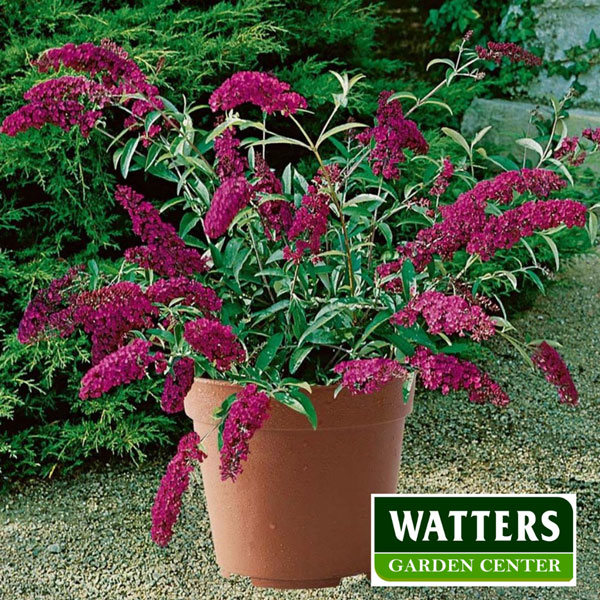
Buzz Magenta Butterfly Bush - Full-size graceful, tapering flowers cover the compact, hip-high plant from summer through fall. Much easier to care for than the towering varieties our grandparents grew. Of course, they attract butterflies like nobody's business!
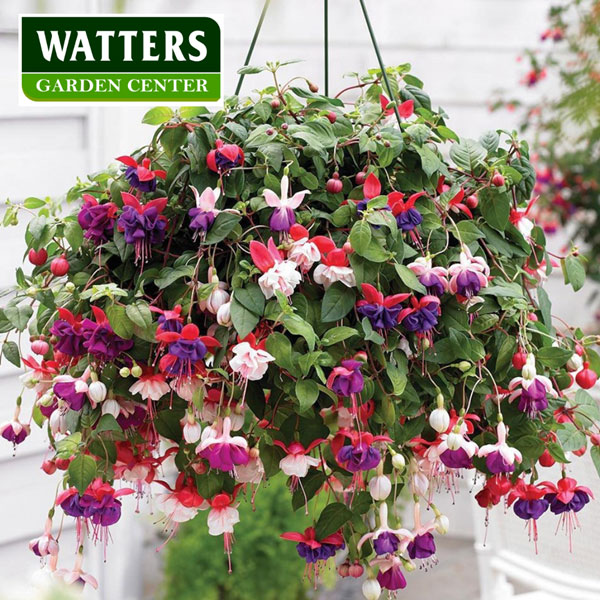
Fuchsia - There are a wide variety of fuchsias at the garden center right now. They have one of the brightest flowers for a shade-loving plant. Blooms usually are pink, orange, yellow and have a drooping habit at the stems' end.
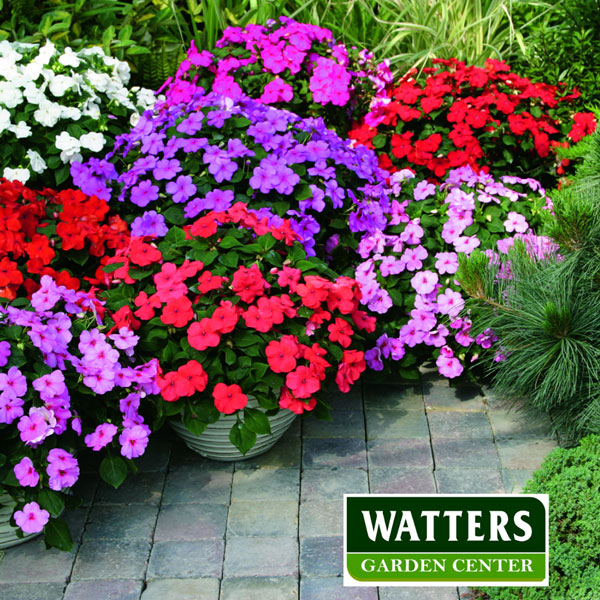
Impatiens - A popular cottage garden plant because of its long-lasting bloom in the shade. It flowers from spring, all the way through to the first frost. Impatiens have simple, five-petal flowers that bloom in various colors from blue, orange, pink, purple, white, and red. Impatiens do seed readily in the home garden.
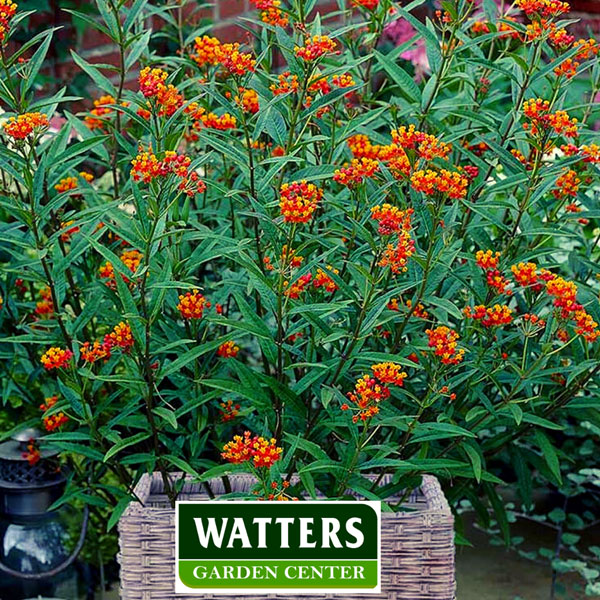
Monarch Promise Milkweed is butterflies' choice of place to lay their eggs. It's also a source of nectar through their migrations. The contrast between the tiny blossoms of orange and red against the spiky variegated leaves make this plant uniquely stunning. Partial shade encourages lusher leaves and blooms all summer! Looks great in containers.
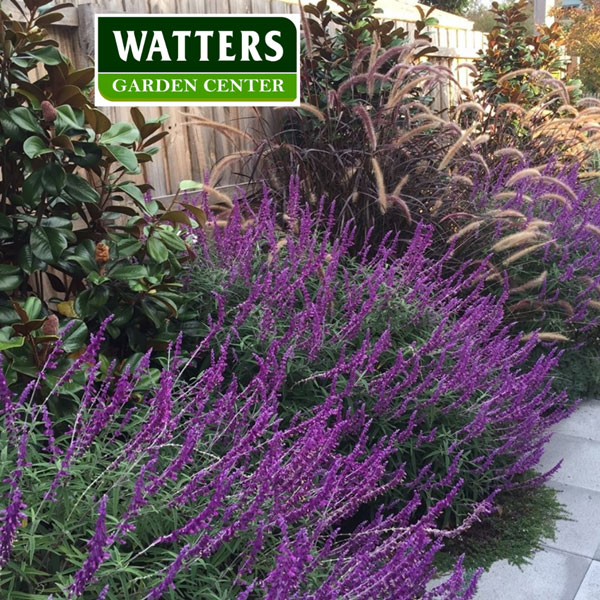
Santa Barbara Salvia - A superior plant for hot, dry slopes. Rugged enough for rock gardens, with similar requirements as western natives, it is suitable for xeriscape or wild gardens in the driest climate. Stellar in large artistic pots. Javelina, deer, and rabbits leave this plant alone.
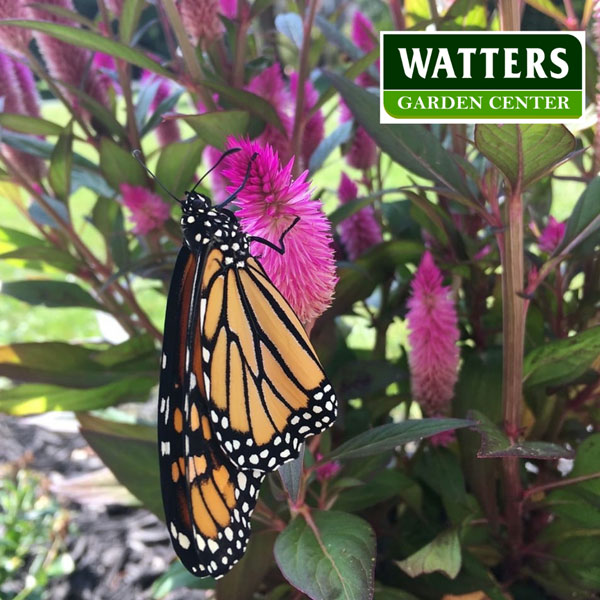
Kelos Magenta Celosia - There are few flowers as showy as celosia. Whether you plant the plumed type, which produce striking upright spires, or the crested type, which has a fascinating twisted form, you'll love using celosia in bouquets. Striking as centerpieces of any container garden, and pollinators love them.

Petunias are a staple in local containers, hanging baskets, and window boxes because of their long-lasting blooms and a wide variety of colors. The trumpet-shaped flowers are a dead giveaway for their ability to attract hummingbirds.

Pink Sparkle Spirea - Beautiful pink flowers emerge in early summer and then re-bloom again in fall. As an added bonus, fall flowers appear down the stem, giving the appearance of an even fuller shrub. The leaves turn a beautiful burgundy in autumn. The perfectly rounded shape requires little pruning. Minimal maintenance, re-blooming flowers, and multi-season pink color is sure to make Pink Sparkler a favorite for butterfly gardens.

Summer Splash Nierembergia - Flowers are profuse and almost look like they're made of paper. Reseeds easily and great for hot locations. Very easy to grow and are perfect for patio pots and baskets.
Water – Don't forget to provide water, especially the hummingbirds. Our garden has a simple fountain that attracts the smaller birds to a bubbling waterfall. Larger birds seem to prefer the good-sized pond in the backyard. Birds need a reliable water source and are satisfied with a simple birdbath or saucer filled with an inch or so of water. I find that birds don't bathe often, but they love to rest on and sip at the edge of a water source.
Ken Lain can be found throughout the week at Watters Garden Center, 1815 W. Iron Springs Rd in Prescott, or contacted through his website at WattersGardenCenter.com or FB.com/WattersGardenCenter.

































